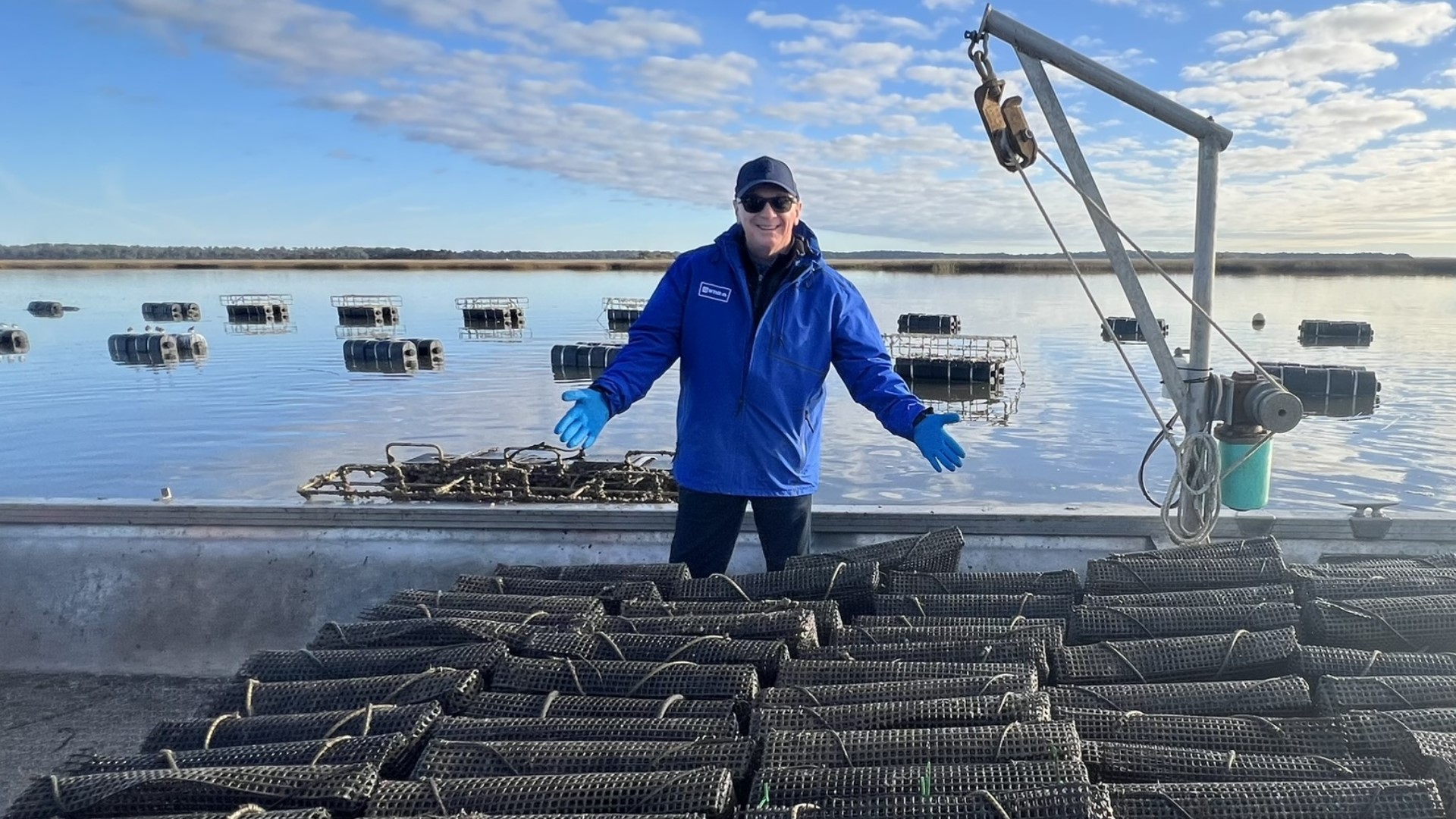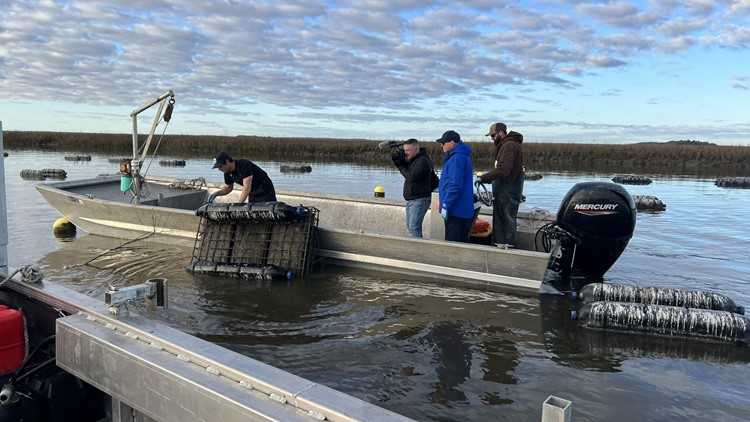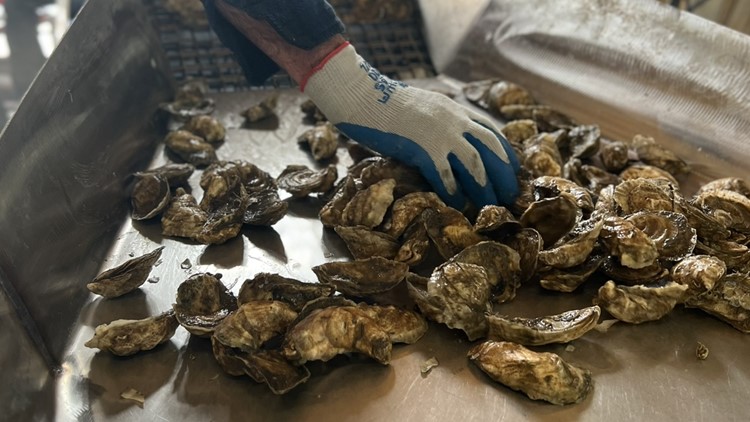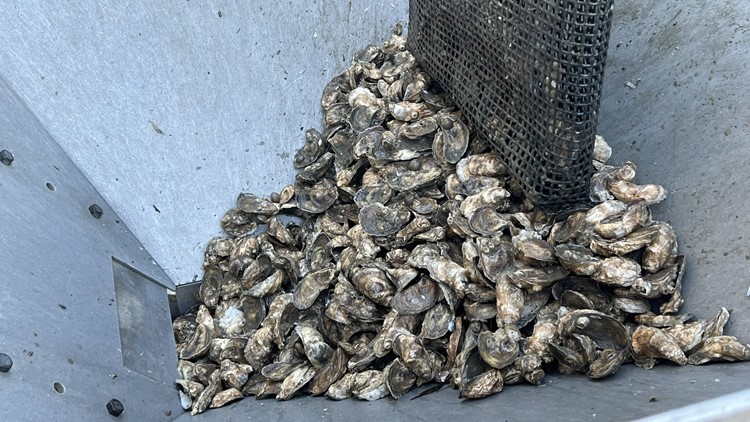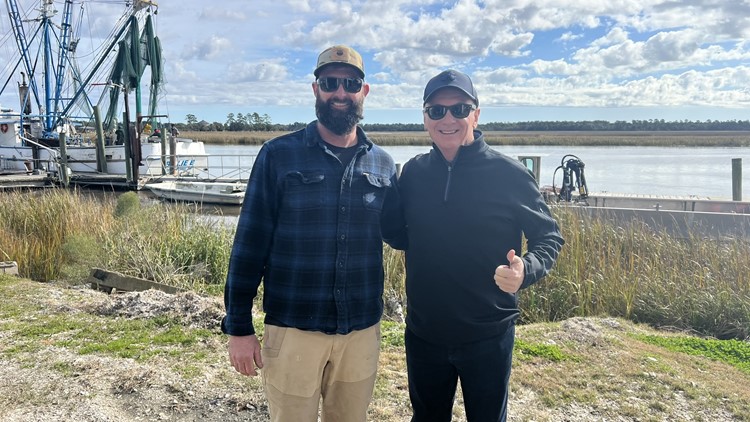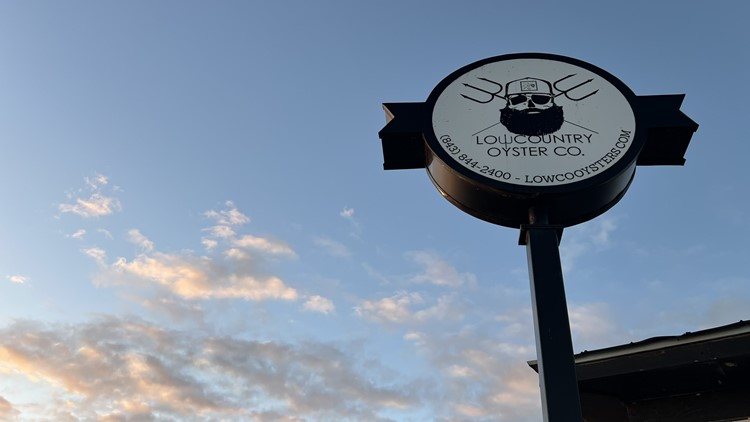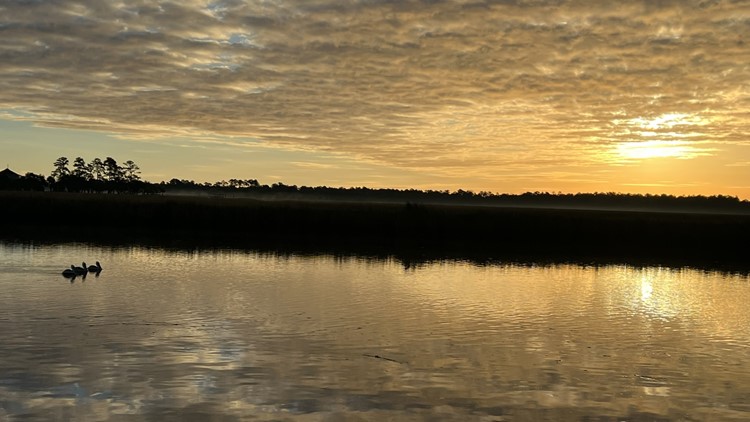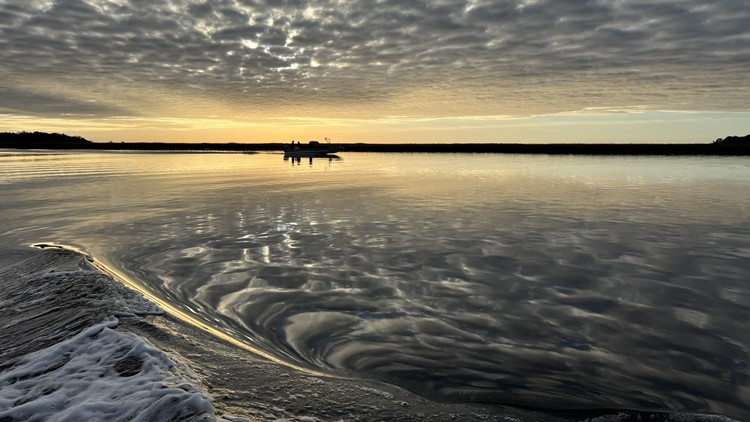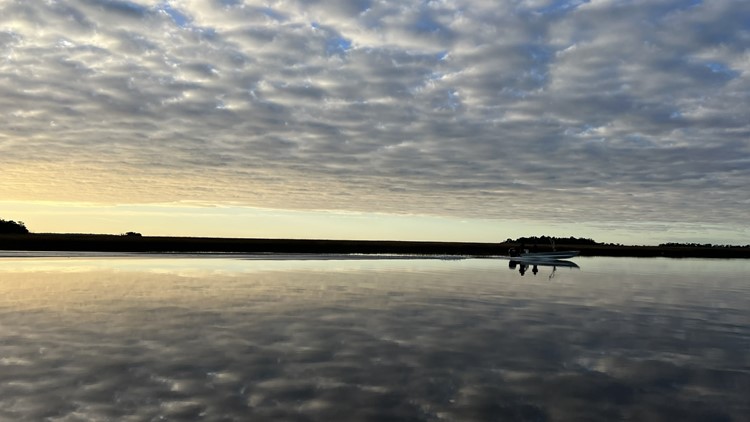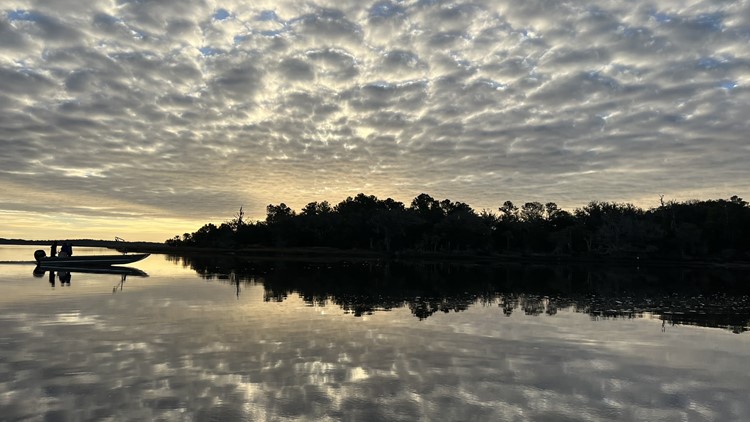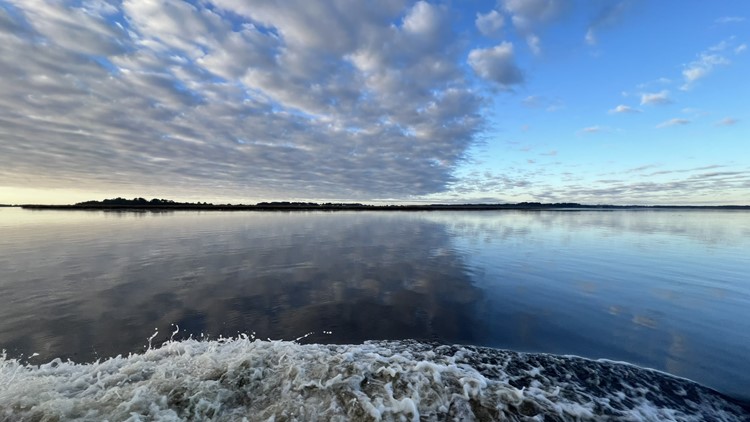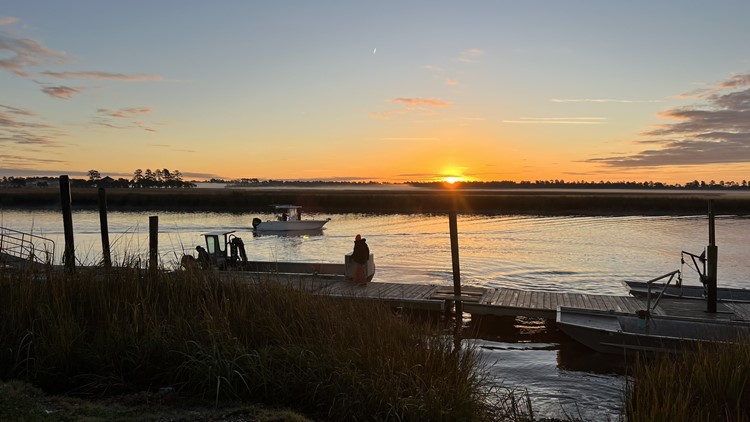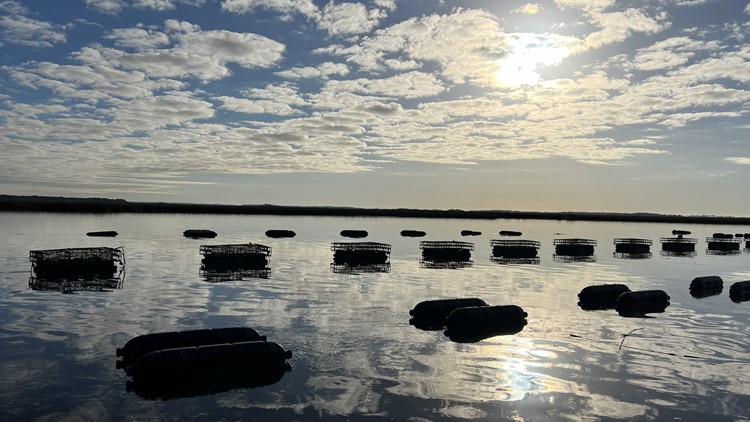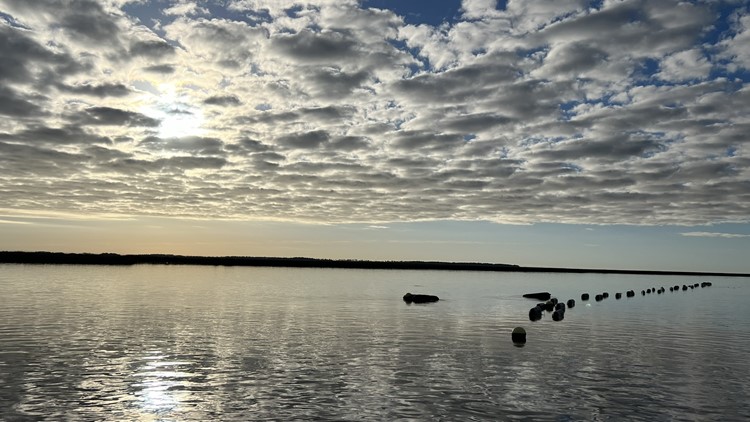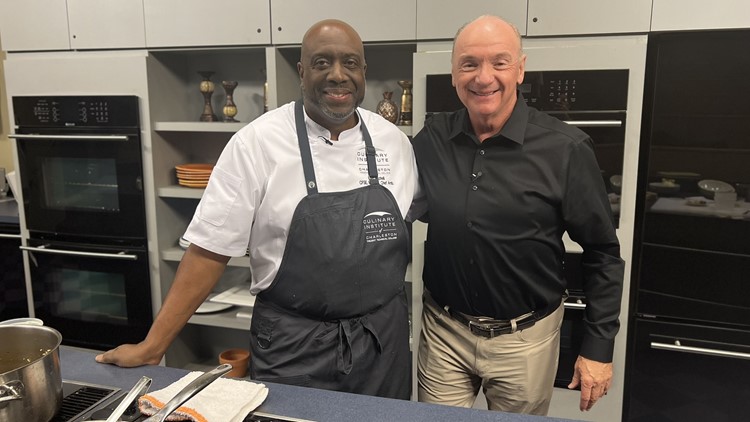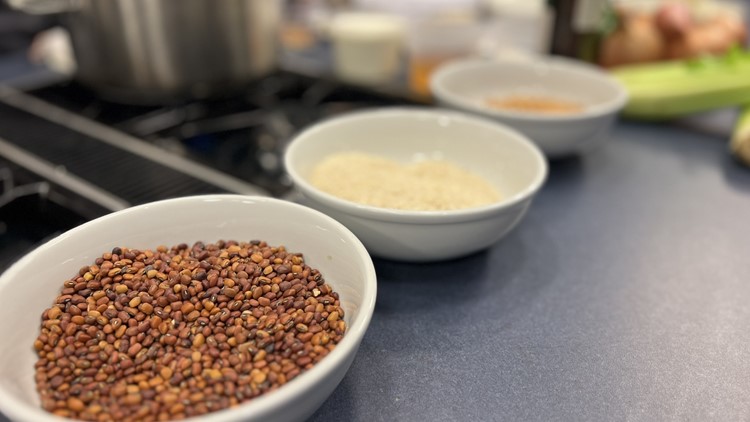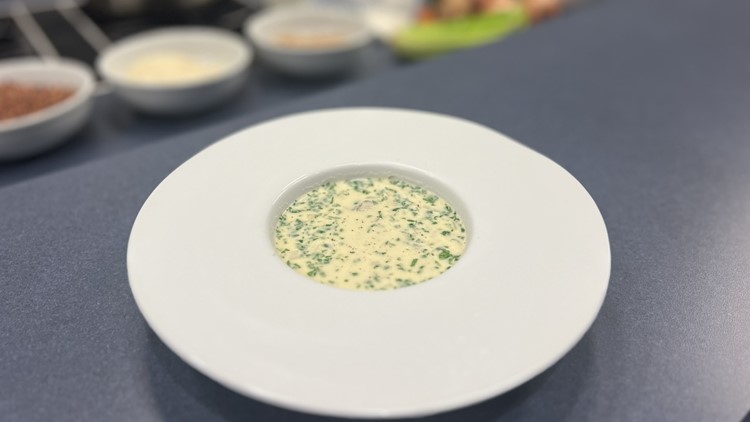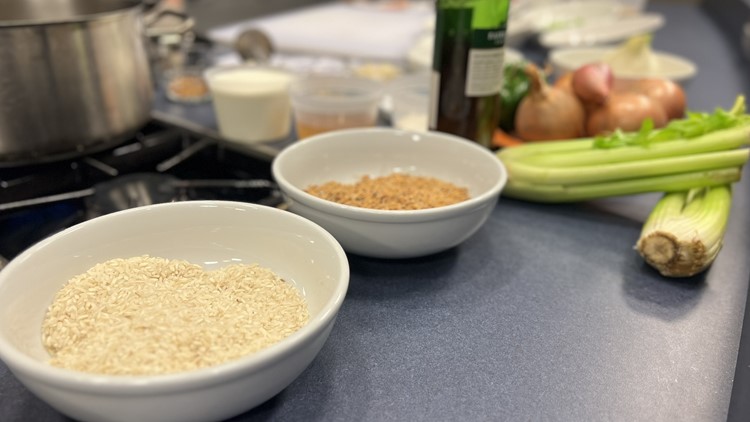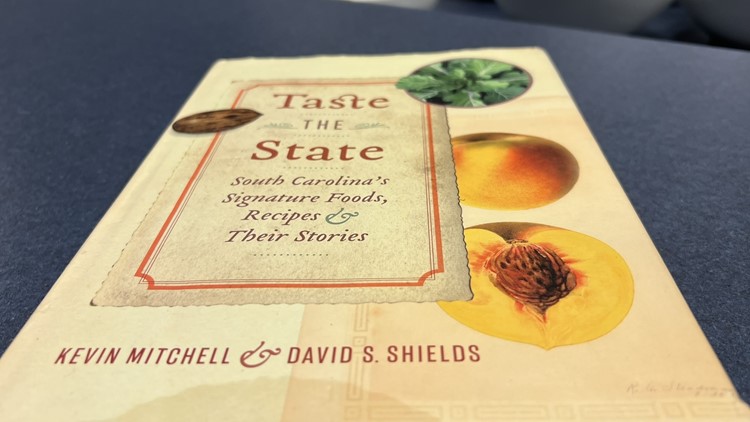CHARLESTON, S.C. — The marshy areas of South Carolina go on for miles, an almost endless area of shallow water and seagrass near the Atlantic Ocean. Look underneath the water and this area is a thriving ecosystem — home to fish, dolphins and, of course, oysters.
Trey McMillan had a flourishing career as a professional fisherman. A few years ago, he transitioned his focus to oyster farming, and he hasn't looked back. Every year, his Lowcountry Oyster Company harvests millions of oysters for use, mainly in restaurants across the southeast.
He is also involved in ecotourism and often brings small groups aboard his 20-foot skiff to get a behind-the-scenes look at just how that Oysters Rockefeller made it to the restaurant.
McMillan and his crew take guests out into the ACE Basin, about an hour from Charleston, to see the beautiful surroundings and the widespread areas harvested by his company.
The ACE Basin is a 350,000-acre mammoth estuary, and it's here that some of the best oysters in the world can be found.
"We have about 3,000 cages, and that is what we are permitted, and it's actually 8 acres, but it's 16 because we actually lease the top of the water column and the bottom, and we have all of our gear anchor here. We are producing big numbers, and it's a very small footprint," McMillan said.
Chuck's Big Adventure in Charleston: Lowcountry Oyster Co.
There are other oyster companies in the area, but competition is not a big deal because, according to McMillan, there is an insatiable demand for oysters.
"The demand is so high, and the supply is so low. I mean, we supply maybe 10% of the world's seafood supply, not us personally but the industry, and you are not even scratching the surface," McMillan said. "To kind of hone on our trade and make it as efficient as possible to grow as many oysters as possible in the smallest footprint."
Tourists get to see the beauty of the area, the age-old practice of harvesting the oysters, and then, see how they are processed.
Back at the dock, crews put the oysters in a hopper, where they are rinsed, sorted and prepared for shipping. Most are actually sent back to the water with only a few long enough, (usually 3") to go to oyster bars and restaurants. Speaking of oysters, what kind does McMillan prefer?
"I like them raw and on the half shell. It's a lot like wine. They take on the flavor where they have grown — different areas produce different flavors," McMillan said.
A half-hour away, at the Culinary Institute of Charleston, author and Chef Kevin Mitchell teaches students the fine art of southern cuisine and especially oysters. Mitchell really laid out a spread for us at the institute. We heard his philosophy on cooking, and his insistence on very little waste. He also produced for us a real specialty: an oyster stew that was fabulous and fairly easy to make.
Chuck's Big Adventure in Charleston: Cooking with Chef Kevin Mitchell
"You want to balance flavors when you have things that are really salty and briny like oysters. You may not add too much salt to this. You are getting a lot of that saltiness specifically from the mixture, but then, when you bite into the oyster, that is all that salt and brine that explodes in your mouth," Mitchell said. "I like to add just a little bit of heat and red pepper. The beauty of being a chef is being able to adlib and to adjust here and there."
Mitchell's students are all over the Lowcountry, preparing oysters and seafood with their own special touch. For this culinary professor, the oysters that are harvested by McMillan and his crew at Lowcountry Oyster Co. in the marshes off the Atlantic are simply as flavorful as any in the world, and he accents what is already a superb dish into something that is memorable and leaves customers at restaurants coming back for more.
More of Chuck's Big Adventure in Charleston:
- Chuck's Big Adventure in Charleston: Old South Carriage Company
- Chuck's Big Adventure in Charleston: The Plantation Singers
- Chuck's Big Adventure in Charleston: Magnolia Plantation
- Chuck's Big Adventure in Charleston: Fort Sumter
- Chuck's Big Adventure in Charleston: Coastal Expeditions
- Chuck's Big Adventure in Charleston: The Gullah Experience
- Chuck's Big Adventure in Charleston: Charleston Tea Garden
- Chuck's Big Adventure in Charleston: Southern fashion

